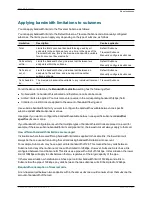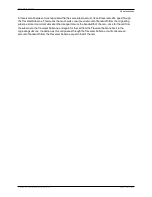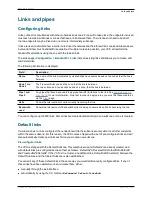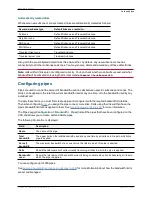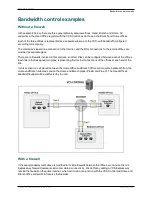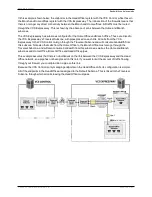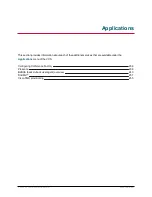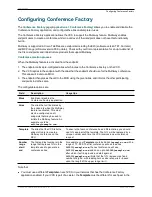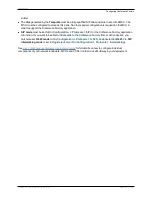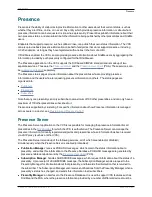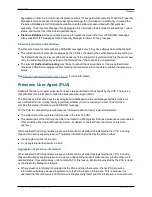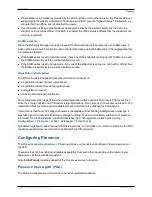
Applying bandwidth limitations to subzones
You can apply bandwidth limits to the Traversal Subzone as follows:
You can apply bandwidth limits to the Default Subzone, Traversal Subzone and all manually configured
subzones. The limits you can apply vary depending on the type of subzone, as follows:
Limitation
Description
Can be applied to
Total
Limits the total concurrent bandwidth being used by all
endpoints in the subzone at any one time. In the case of the
Traversal Subzone, this is the maximum bandwidth available
for all concurrent traversal calls.
Default Subzone
Traversal Subzone
Manually configured subzones
Calls entirely
within...
Limits the bandwidth of any individual call between two
endpoints within the subzone.
Default Subzone
Manually configured subzones
Calls into or
out of...
Limits the bandwidth of any individual call between an
endpoint in the subzone, and an endpoint in another
subzone or zone.
Default Subzone
Manually configured subzones
Calls handled
by...
The maximum bandwidth available to any individual traversal
call.
Traversal Subzone
For all the above limitations, the
Bandwidth restriction
setting has the following effect:
n
No bandwidth
: no bandwidth is allocated and therefore no calls can be made.
n
Limited
: limits are applied. You must also enter a value in the corresponding bandwidth (kbps) field.
n
Unlimited
: no restrictions are applied to the amount of bandwidth being used.
Use subzone bandwidth limits if you want to configure the bandwidth available between one specific
subzone and
all other
subzones or zones.
Use pipes if you want to configure the bandwidth available between one specific subzone and
another
specific
subzone or zone.
If your bandwidth configuration is such that multiple types of bandwidth restrictions are placed on a call (for
example, if there are subzone bandwidth limits and pipe limits), the lowest limit will always apply to that call.
How different bandwidth limitations are managed
In situations where there are differing bandwidth limitations applied to the same link, the lower limit will
always be the one used when routing the call and taking bandwidth limitations into account.
For example, Subzone A may have a per call inter bandwidth of 128. This means that any calls between
Subzone A and any other subzone or zone will be limited to 128kbps. However, Subzone A also has a link
configured between it and Subzone B. This link uses a pipe with a limit of 512kbps. In this situation, the lower
limit of 128kbps will apply to calls between the two, regardless of the larger capacity of the pipe.
In the reverse situation, where Subzone A has a per call inter bandwidth limit of 512kbps and a link to
Subzone B with a pipe of 128kbps, any calls between the two subzones will still be limited to 128kbps.
Bandwidth consumption of traversal calls
A non-traversal call between two endpoints within the same subzone would consume from that subzone the
amount of bandwidth of that call.
Cisco VCS Administrator Guide (X8.1.1)
Page 228 of 507
Bandwidth control
About subzones















